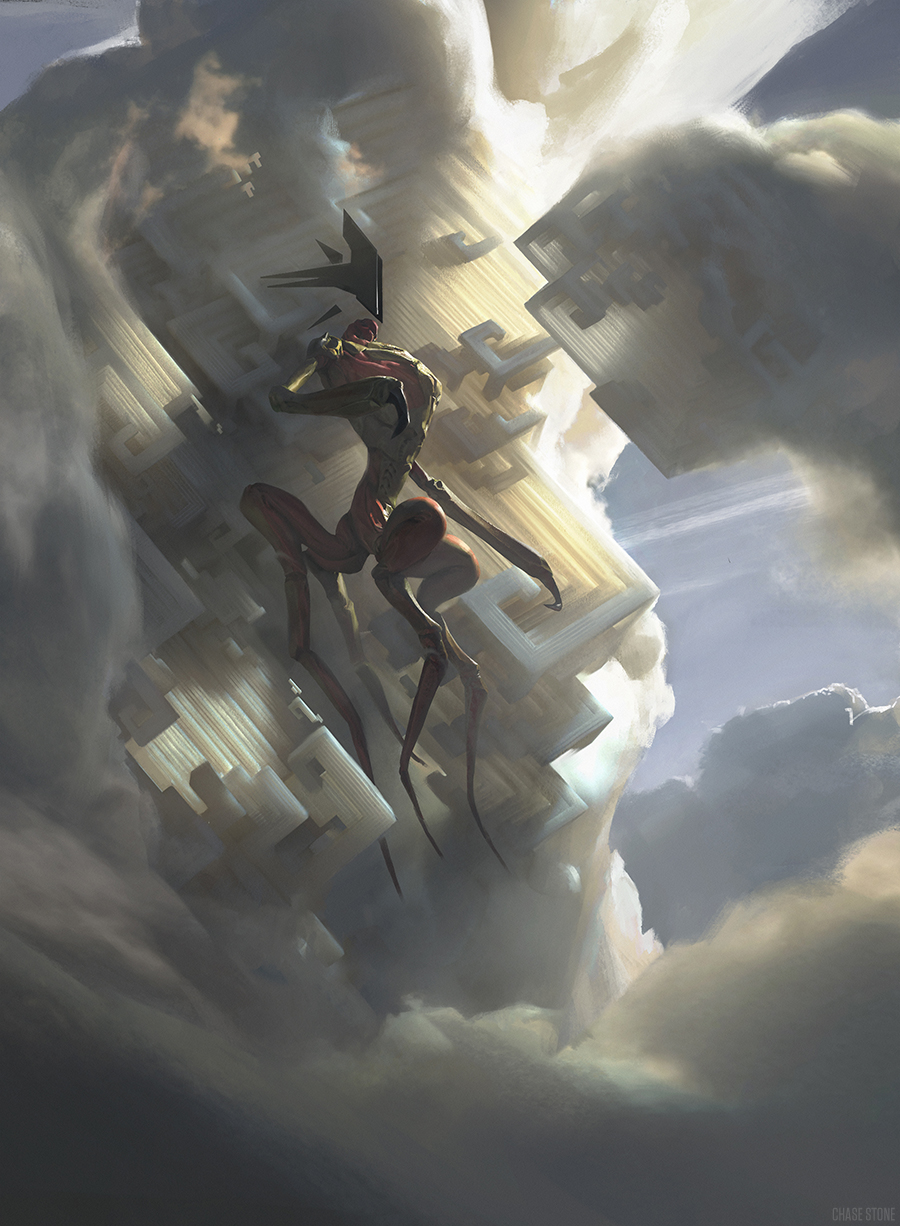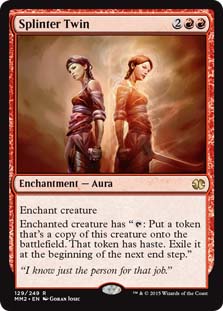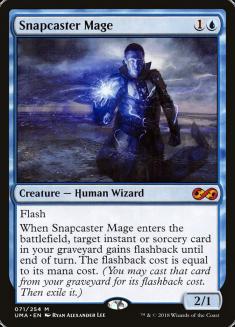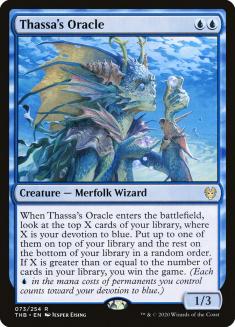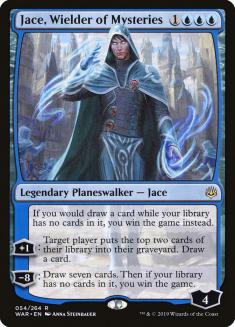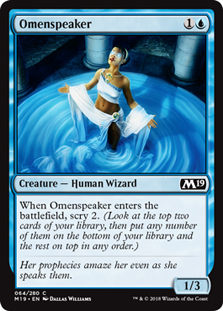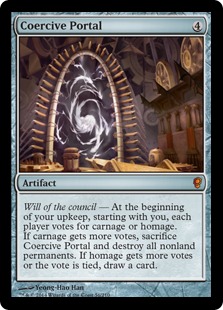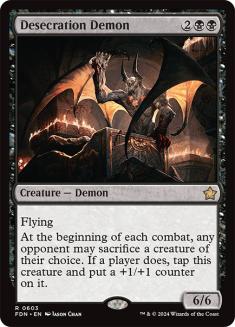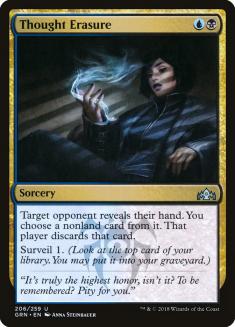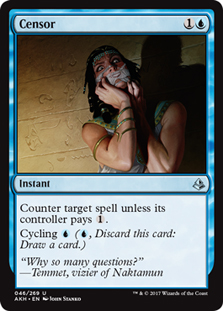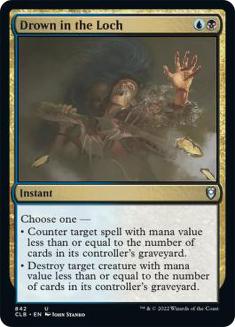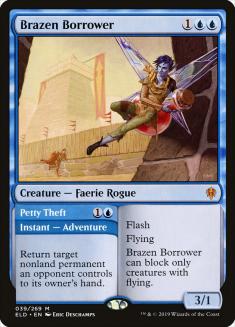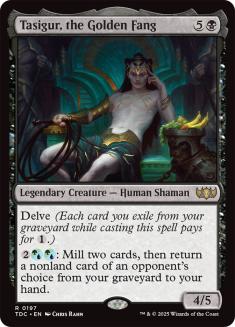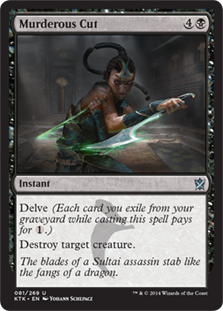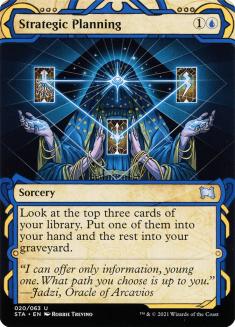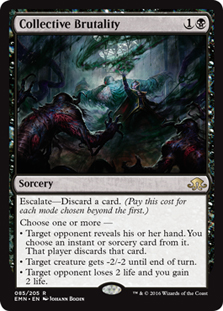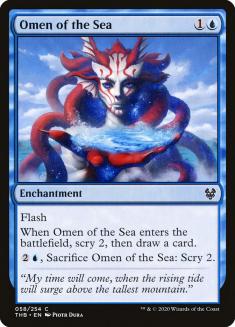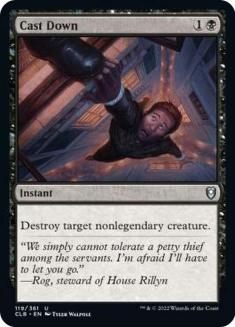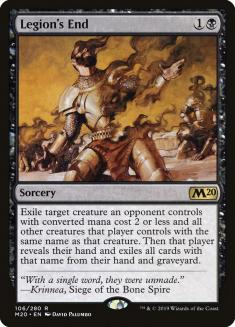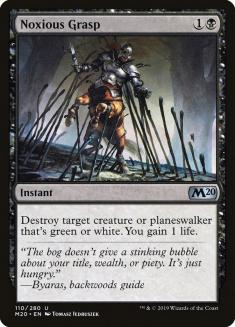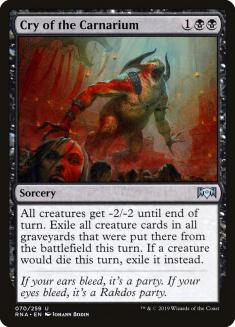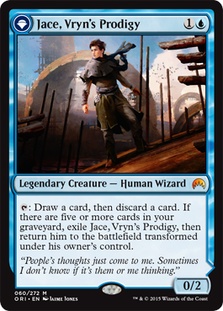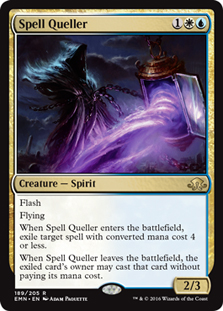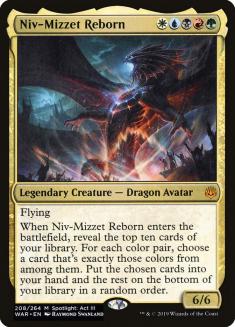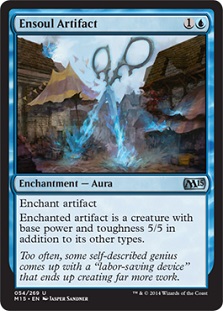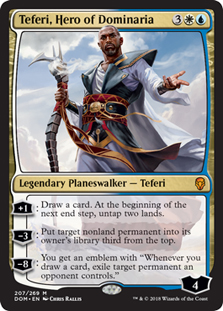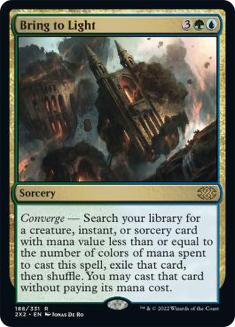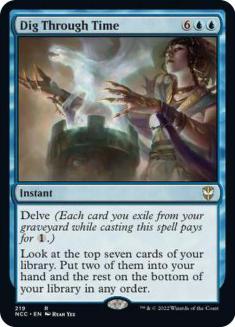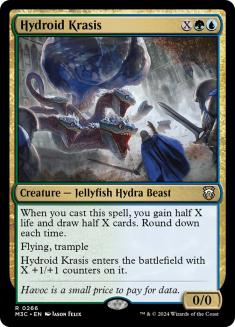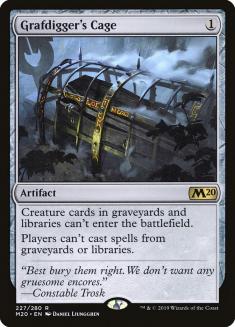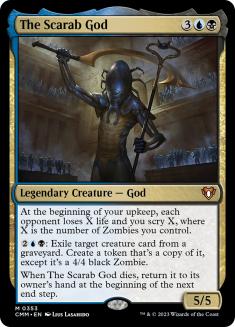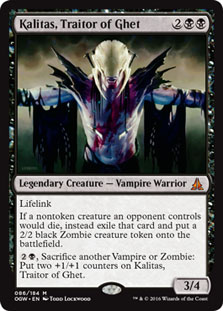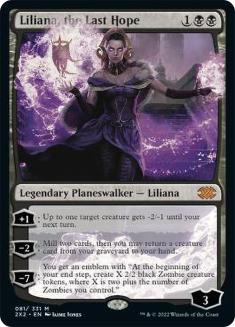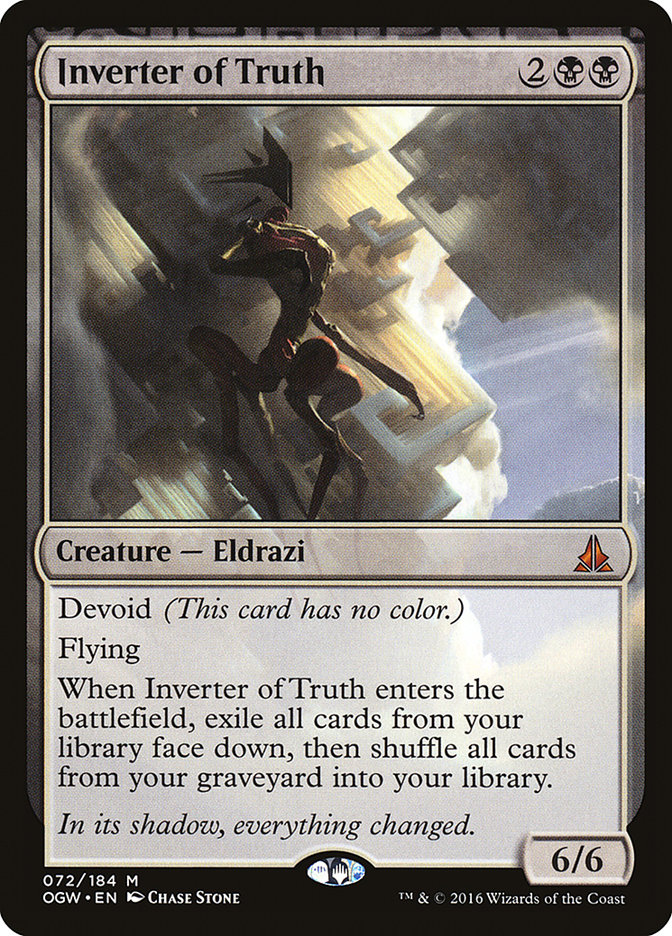There’s an incredible two-card combo deck in Pioneer right now.
Creatures (11)
Planeswalkers (2)
Lands (20)
Spells (27)

There’s a lot to take in here. The basic combo goes something like this: Cast Inverter of Truth, making your library microscopic. Then use either Jace, Wielder of Mysteries or Thassa’s Oracle to win the game. Delve spells are in the deck to ensure that the graveyard doesn’t get too large.
Fatal Push’s applications are fairly obvious, but Thoughtseize is particularly impressive in this deck, as it can play in either direction: as an interactive card that pokes holes in the opposing strategy while buying time, or sniping a piece of interaction from the opponent that would otherwise hinder the combo. Rather than having an entire deck committed to implementing its combo, Dimir Inverter is an interactive deck that has a combo finish. Sound familiar?
During its time in Modern, Splinter Twin variants had their Splinter Twin / Deceiver Exarch combo, with varying amounts of Pestermite and friends, depending on how combo-oriented they wanted to be. The levels varied with the amount that the list relied on the combo in order to win because of how good Splinter Twin was at pivoting into a fair deck.
The supporting cast around Splinter Twin decks was frequently good enough that it simply won based on the value of threatening the combo, backed up by a reasonable Izzet-based shell. Dimir Inverter has the same luxury, but is much harder to interact with. This is because all of the abilities of the creatures happen as soon as they enter the battlefield.
Despite Thassa’s Oracle and Jace, Wielder of Mysteries being the Laboratory Maniacs in the combo, it takes more than a Wild Slash or Fatal Push to turn the combo off. Thassa’s Oracle still gets its trigger if it dies, and if there are zero cards in its controller’s library, they’ll still win the game. That doesn’t even get into the fact that there can be other permanents fueling devotion to blue on the battlefield that make it near-impossible to stop. Jace is a bit easier to stop, as it can be interacted with, but a five-plus loyalty planeswalker isn’t exactly an easy permanent type to remove from the battlefield out of nowhere.
On top of the combo’s heightened resiliency (when compared to ‘Twin), it also has a significantly more powerful fail-state than Splinter Twin combo.
Believe it or not, these cards are more powerful than a Wind Drake, a Horned Turtle, and a stone blank. This means that while the deck has the luxury of sideboarding out combo pieces, it doesn’t have to prioritize completely cutting combo pieces. It simply has the option to morph into a Dimir control deck in the matchups that demand it.
Composition
With Dimir Inverter still in its infancy, the specifics of the list are constantly evolving, but the core of the deck looks something like this:
- 25 lands
- 4 Inverter of Truth
- 5-7 Thassa’s Oracle / Jace, Wielder of Mysteries
- 4 Opt
- 4 Fatal Push
- 4 Thoughtseize
- 4 Dig Through Time
Past that, there are a few different things that people are doing, I’ve chosen to slant my list in the direction of interaction, in order to capture what made Modern Twin as powerful as it was.
Interactive bits that are good for fueling delve spells? Ship it.
Drown in the Loch is a different version of the same theory that makes Thoughtseize the player that it is in the deck. That’s to say the card gets to play a role as an interactive piece in a fairer control shell, while also acting as protection when it’s time to actually combo.
Brazen Borrower wears a couple of hats in the deck. Think of the Petty Theft half of the card as something akin to Remand. Without the cantrip that Remand has, it’s rough to draw in multiples, but for bridging to a combo, it’s an amazing tool.
Later in the game, it has the benefit of acting as a sort of combo piece. Having multiple blue pips in its converted mana cost means that it makes Thassa’s Oracle kills more reliable.
With delve frequently being necessary to quickly combo, I’m currently testing the fifth delve spell. With the way he’s played in games, Tasigur’s modality hasn’t felt entirely dissimilar to Brazen Borrower. Tasigur is a perfectly serviceable card on its face that’s seen plenty of play in fair decks.
The fact that its delve ability can help enable Inverter kills is a bonus. His activated ability even shrinks the library even further if the game gets complicated after he’s cast!
The other contender in the “backup delve spell” slot is Murderous Cut. It’s hard to really justify playing more than five delve spells before they start tripping over each other. Murderous Cut is going to be best in the builds of the deck that aren’t playing Drown in the Loch, because Collective Brutality is going to struggle against the likes of Steel Leaf Champion and Ensoul Artifact.
Fatal Push is also overloaded in those matchups to the point that having backup is nice.
Circling back around, something that Tasigur has over Murderous Cut is that he’s a delve spell that can be cast unconditionally. That’s to say that Murderous Cut isn’t castable on an empty battlefield, which can complicate setting up a combo kill. Tasigur doesn’t have that drawback.
The cards that lean further from an interactive gameplan and towards comboing prioritize digging towards specific combo pieces while fueling early Dig Through Times.
Omen of the Sea has also been gaining traction in the turbo-combo versions of the deck. In spite of the fact that it doesn’t really fuel Dig Through Time, the fact that it doesn’t put cards in the graveyard can be a benefit for natural Inverter kills. On the note of natural Inverter kills, Omen of the Sea being a blue pip on the battlefield means that it increases the power of Thassa’s Oracle.
Sideboard
When looking at the sideboard with a deck like this, one of the first things that sticks out is that the deck is more hammers than scalpels, a bunch of incredibly powerful, albeit pointed, cards. In a deck like Dimir Inverter, the most important aspect of the transformational sideboard is knowing in which matchups the deck is supposed to transform.
Disruptive aggro decks can simply race the Inverter deck’s Plan A, and having ways to check those decks is key. For now, Steel Leaf Champion decks have been on the decline, while Bloodsoaked Champion and Ensoul Artifact have been picking up. This increases the value of Legion’s End over something like Grasp of Darkness, Ultimate Price, or Disfigure.
Cry of the Carnarium is the current sweeper of choice for a couple of reasons. The biggest reason is that it is great against the two premier aggro decks of the format, Mono-Black Aggro and Izzet Ensoul. Other options include Ritual of Soot, which is better at answering Lovestruck Beast and Ensoul Artifact, and Languish, better at beating Selfless Spirit and Spawn of Mayhem. Another attractive aspect of Cry of the Carnarium is how much better it is for the curve. Outside of Brazen Borrower, the deck doesn’t really have much in the way of three-drops.
In the games where the importance of grinding supercedes the importance of comboing, Jace, Vryn’s Prodigy is an incredible engine piece. On its face, he fills the graveyard for delve spells and does a Snapcaster Mage impression with reactive pieces.
What’s important to note is how much Jace’s stock raises in post-sideboard games. Normally, players have things like Wild Slash, Fatal Push, and so on that Jace acts as a lightning rod for. Once the opponent has taken those cards out of their deck for a mix of aggression and combo disruption, Jace actually gets time to loot a few times and transform.
An important aspect Jace provides from the sideboard when trimming combo pieces is how he serves as a threat in grindy matchups. To draw more from the Splinter Twin parallel, it was common for Twin decks to have some threat outside of the 2/1s and 1/4s that the deck was known for, like Keranos, God of Storms. Jace does a ton of work bridging the gap to The Scarab God and Tasigur, while also being a serviceable tool for grinding.
Fatal Push is removal for creatures. Mystical Dispute is removal for spells.
Mystical Dispute is the kind of card that helps shift cards like Fatal Push into playable cardboard against the likes of Azorius Control.
With the direction that Pioneer has been heading in the last couple of weeks, it feels like most decks have cards with blue payoffs:
Most of these cards require an actual counterspell to answer effectively. Mystical Dispute has become easier to play around over the last few weeks, but there isn’t always a much better way to beat it than to play into it and swallow your medicine.
A hate card for the Underworld Breach decks. There are other applications, of course. Hitting a few creatures out of Mono-Black Aggro can be worth a card when pivoting into a more grindy role, for example.
The Scarab God is simply the best card at going over the top in grindy games. Niv-Mizzet Reborn running Unmoored Ego incentivizes Dimir Inverter to diversify its threats, and The Scarab God is the best way to try to singlehandedly outgrind what they’re doing.
Kalitas is likely the weakest card in the sideboard, and is mostly in the sideboard to play a similar role as The Scarab God, but for creature matchups. This is most relevant in the matchups where Dimir Inverter is forced to adopt a controlling role, like against Heliod, Sun-Crowned and Mono-Black Aggro. Against these decks, some number of combo pieces find their way to the sideboard for Games 2 and 3, so having more ways to reliably snowball an advantage is necessary.
Liliana, the Last Hope isn’t the best card at any single role that she plays, but as with many other cards in the deck, versatility is the name of the game. Her abilities are at their most effective in different matchups.
Her +1 is going to get the most work in against decks that pointedly play a pile of relevant X/1 creatures, such as Azorius Spirits and Izzet Ensoul.
Liliana’s minus abilities shine in matchups where grinding can come into play. Matchups like Azorius Control and Five-Color Niv-Mizzet are the biggest places where her recurring Jaces will come up, but thatt isn’t nothing. The fact that she’s just a reasonable ultimate machine against some slower decks in the format is honestly just a freeroll to have stapled onto an already reasonable card.
As of submitting this article, Dimir Inverter has really only started to show its real potential in the Pioneer metagame. Over the next couple of weeks, other players tuning to fight the archetype, and the way that Inverter responds in turn, will speak volumes about its staying power. For now, I’m prepare to go all-in and say that this is the deck to play going forward.
The mix of flexibility and unfairness is something that just doesn’t come around very often, and it’s foolish not to cash in on it when it does.

